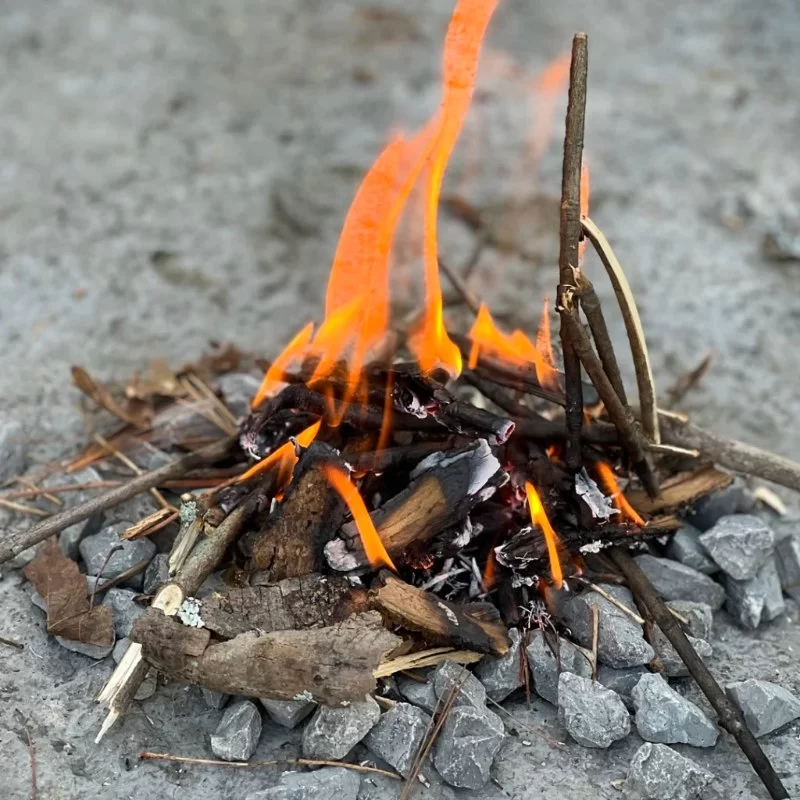- understanding-heat-efficiency-in-a-campfire
- choosing-the-right-location-and-materials
- structuring-the-campfire-for-optimal-burn
- real-camping-stories-and-fire-building-mistakes
- fine-tuning-your-fire-building-skills
1. Understanding Heat Efficiency in a Campfire
When it comes to enjoying the outdoors, knowing how to build a campfire for maximum heat and efficiency can transform a chilly night into a cozy, memorable experience. But there's more to it than simply lighting a match. Heat efficiency in a fire means making the most of your fuel, minimizing smoke, and generating enough warmth to cook, dry gear, or simply relax. Whether you're winter camping in the Rockies or enjoying a mild evening at Pine Cliff Resort, an efficient campfire starts with understanding the science behind combustion and airflow.
Efficient campfires maximize the “three Ts” of combustion: temperature, time, and turbulence. High temperatures are necessary for complete burning; the fire must be hot enough to consume all volatile gases. Time ensures that the flames burn long enough to fully combust, and turbulence (airflow) feeds oxygen into the mix. The goal is a fire that burns cleanly with minimal smoke and leaves only fine white ash behind—a true sign of efficiency.
2. Choosing the Right Location and Materials
Before striking that first match, you need to assess your surroundings. Safety is the top priority. Choose a site that’s sheltered from the wind, free of overhanging branches, and at least 15 feet away from tents and gear. Dig a shallow pit or use a designated fire ring to contain the blaze. At Pine Cliff Resort, for instance, we offer pre-cleared fire-safe zones so you can focus more on building your fire and less on fire safety logistics.
Wood selection also plays a major role in maximizing heat. Start with tinder—materials like dry grass, birch bark, or cotton balls soaked in petroleum jelly. Move to kindling (small twigs and dry sticks) before adding your main fuelwood. Seasoned hardwoods like oak, hickory, or maple are your best bet for high, sustained heat. Softwoods like pine burn fast and hot but leave more residue. If you’re camping in a damp environment, consider packing a few kiln-dried logs or a firestarter brick to ensure ignition.
3. Structuring the Campfire for Optimal Burn
Now that you have the right location and fuel, it’s time to assemble the fire. The shape of your campfire directly influences its heat efficiency. Three common structures work particularly well:
Teepee Structure: This classic shape is perfect for getting fires started quickly. Arrange tinder in the center, then lean kindling around it like a cone. Once lit, the flames will climb upward and ignite larger logs placed nearby.
Log Cabin: Great for long-lasting, stable fires. Stack larger logs in a square formation, alternating direction like Lincoln Logs. Place your tinder and kindling inside the square. This setup allows excellent airflow and radiates heat evenly outward.
Upside-Down Fire: Ideal for efficient, low-maintenance fires. Place the largest logs on the bottom, then stack smaller logs and kindling upward, ending with tinder at the top. When lit, the fire burns downward, consuming fuel methodically with minimal tending.
The right structure ensures proper airflow and minimizes wasted energy. Many experienced campers at Pine Cliff Resort swear by the log cabin method for its balance between ease and longevity—especially during cool mountain nights where efficiency really matters.
4. Real Camping Stories and Fire Building Mistakes
Sometimes, the best way to learn how to build a campfire for maximum heat and efficiency is by hearing what *not* to do. A frequent camper at Pine Cliff Resort once tried to light a campfire using only wet pine cones and green logs. The result? Billows of thick smoke, barely any flame, and an evening of cold stew. The lesson: moisture content and wood type matter more than you think.
Another guest, Sarah, shared how she overfed the fire with logs, choking off oxygen and turning the campfire into a smoldering mess. With some guidance from a park ranger, she learned to start small, build gradually, and always leave room for airflow. Now, she runs mini fire-building workshops every spring for first-time campers, turning her past mistakes into teaching moments.
These firsthand experiences underline the importance of trial and error. While you can read all the guides you want, there’s nothing quite like feeling the warmth of a perfectly built fire you crafted yourself. At Pine Cliff Resort, we encourage guests to ask questions, share stories, and get hands-on with nature—because every flame has a lesson.
5. Fine-Tuning Your Fire Building Skills
Mastering how to build a campfire for maximum heat and efficiency isn’t about a single perfect fire—it’s about building up your skills through practice. Start small. Keep a fire journal if you’re the reflective type: what wood you used, how you arranged it, what the weather was like. Over time, patterns emerge. You’ll notice which techniques worked and which didn’t, which types of wood burn longer, and how to adjust your fire based on weather and use case (warming vs. cooking).
Consider investing in small tools like a folding fire grate, bellows, or a moisture meter for wood. Even something as simple as a fire reflector made from rocks or foil can dramatically increase radiant heat toward your campsite. And if you’re camping with a group, assign fire-building duties as a team-building exercise. You’ll be surprised how quickly firecraft builds confidence and camaraderie.
Finally, always leave your campsite better than you found it. Put out your fire completely, scatter cold ashes, and restore the fire ring if needed. At Pine Cliff Resort, we pride ourselves on sustainability, and we encourage all guests to follow Leave No Trace principles to preserve the beauty of our shared wild spaces.







